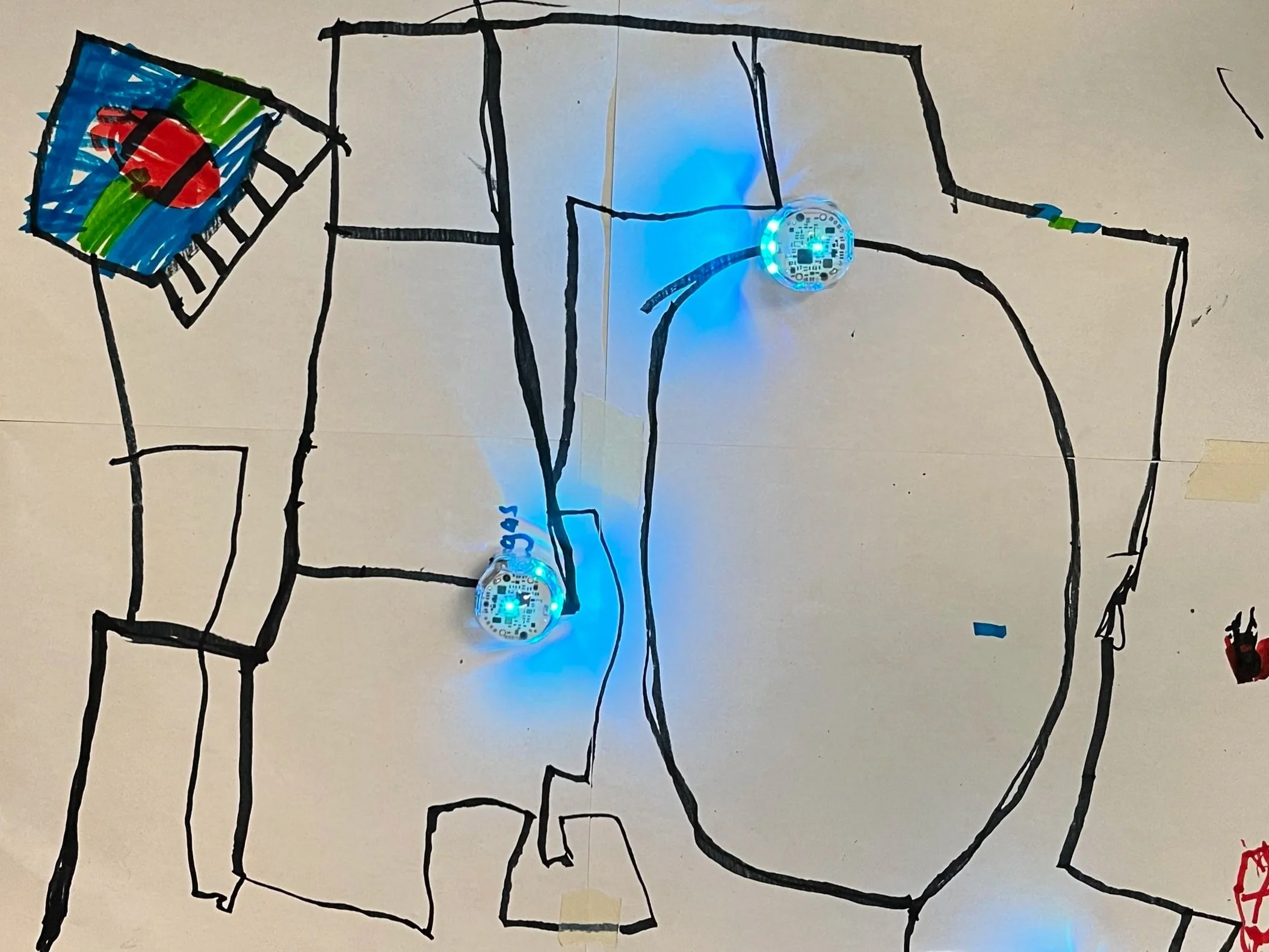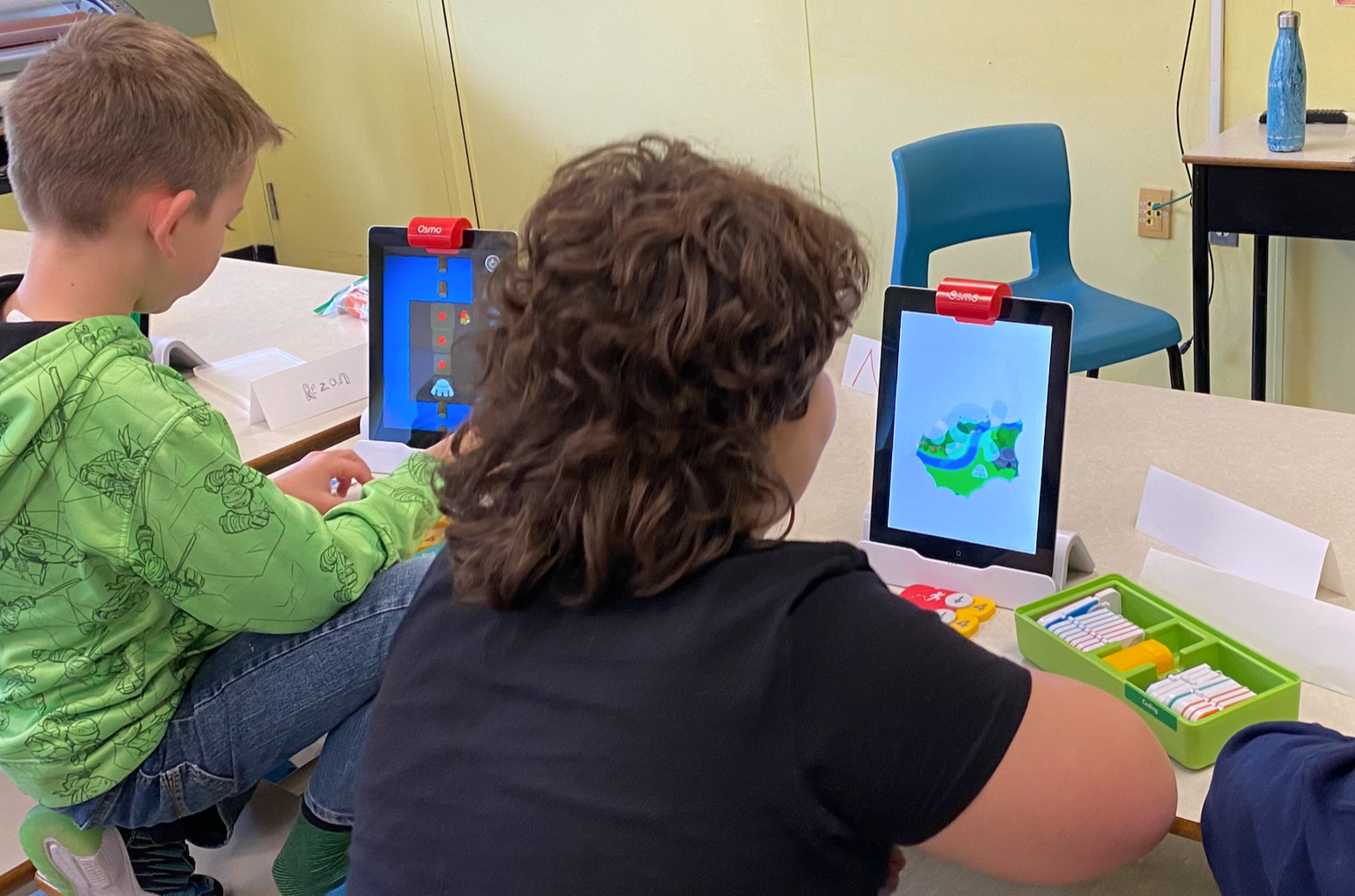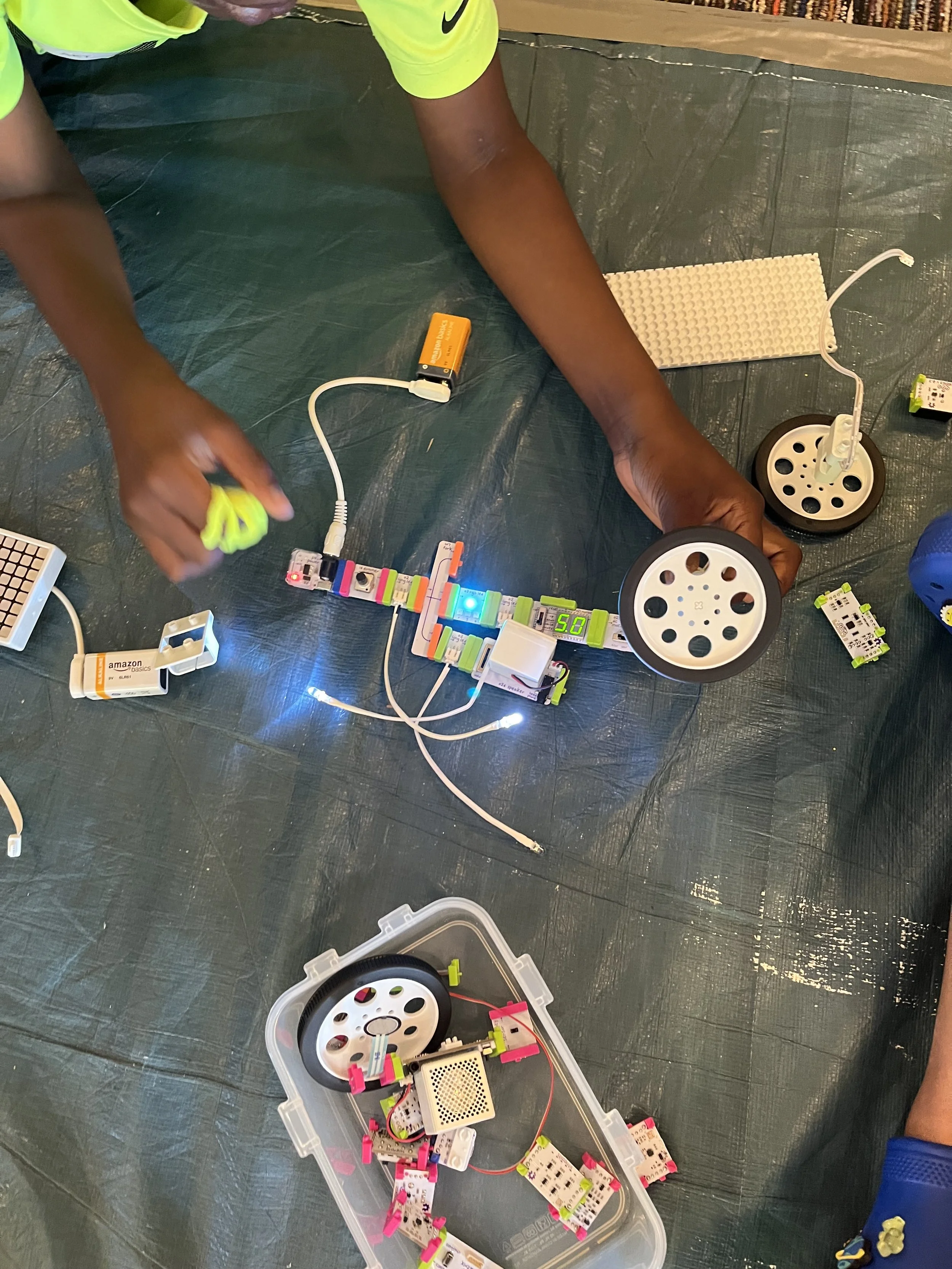Teacher Professional Development
Worlds UNBound hosts and delivers professional development events for educators interested in integrating Science, Technology, Engineering and Math activities into their classrooms. We follow New Brunswick curriculum guidelines. Book an event by emailing worlds@unb.ca
Ozobots: The Tiny Robot with Big Learning Potential
Ozobot is a pocket-sized robot that brings coding to life through creativity and play. Students can start coding by drawing lines and colour sequences that tell the robot where to go and what to do—an engaging way to introduce sequencing, logic, and problem-solving. As skills grow, learners can advance to OzoBlockly, a drag-and-drop block coding platform that teaches programming concepts like loops, variables, and conditional logic.
This versatile tool connects to a wide range of subjects beyond STEM. Students can use Ozobots to explore math (measuring paths and angles), science (modelling life cycles or energy flow), geography (navigating maps), and language arts (retelling stories through coded robot movement). Whether coding with colours or blocks, Ozobot helps bridge hands-on learning with digital thinking across the curriculum.
LEGO Education SPIKE™ Prime: Building, Coding, Creating
SPIKE™ Prime combines LEGO building elements with programmable motors and sensors to help students bring their ideas to life. Using block coding or Python, learners design, build, and code robots that can move, react, and solve real-world challenges. This hands-on platform develops problem-solving, creativity, and collaboration as students iterate through the engineering design process.
SPIKE™ Prime connects across the curriculum in meaningful ways. In science and engineering, students can explore energy transfer, simple machines, and design principles. In math, they apply measurement, ratios, and data collection. In technology, they learn coding logic and automation, SPIKE™ Prime helps students see how coding, creativity, and engineering come together to make innovation tangible.
LittleBits: Invent with Circuits and Creativity
littleBits are magnetic electronic building blocks that snap together to create real, working circuits—no soldering or wires required. Each color-coded Bit has a specific function (power, input, output, or connector), allowing students to experiment with sensors, lights, motors, and sound to invent their own devices. Through hands-on building, learners explore circuitry, logic, and engineering design while developing problem-solving and creative thinking skills.
littleBits can be integrated across many curriculum areas. In science, students investigate electricity, energy, and simple machines; in math, they apply measurement and patterning; in technology and engineering, they prototype and test inventions; and in art and design, they create interactive sculptures or musical instruments. littleBits empower students to think like inventors—turning imagination into innovation, one circuit at a time.
Sphero: Coding in Motion
Sphero is a programmable robot that brings coding concepts to life through movement, light, and creativity. Using block coding or JavaScript, students can design and run programs that make Sphero navigate mazes, react to sensors, or display colourful light patterns. Through hands-on experimentation, learners build a strong foundation in computational thinking, problem-solving, and digital literacy.
Sphero connects to a wide range of subjects beyond computer science. In science, students can explore forces, motion, and acceleration; in math, they can apply geometry, measurement, and data analysis; in technology and engineering, they can test designs and iterate on solutions; and in the arts, they can choreograph creative light or movement sequences. Sphero transforms coding into an active, cross-curricular experience that inspires innovation and curiosity.
Osmos Coding: Play Meets Computational Thinking
Osmo Coding combines physical coding blocks with interactive digital play to teach students the foundations of programming in a fun and intuitive way. By arranging tangible blocks that control an on-screen character’s actions, learners explore sequencing, loops, logic, and problem-solving—no prior coding experience required. Osmo’s tactile approach helps make abstract coding concepts concrete and accessible for young learners.
Osmo connects across multiple curriculum areas. In math, students practice sequencing, patterns, and spatial reasoning; in language arts, they build storytelling and communication skills as they guide characters through adventures; in science and technology, they develop logical reasoning and digital fluency; and in the arts, they can design creative challenges and stories. Osmo Coding turns screen time into an active, hands-on learning experience that nurtures curiosity and critical thinking.




